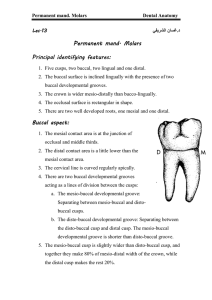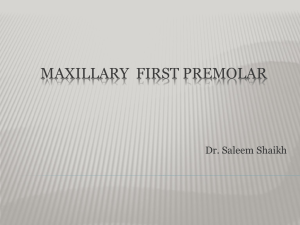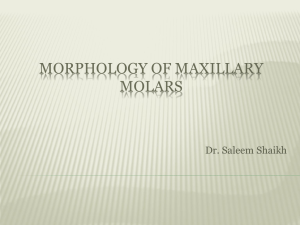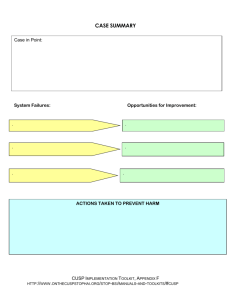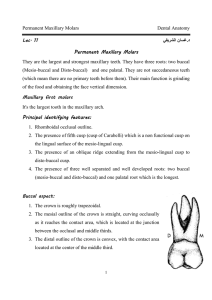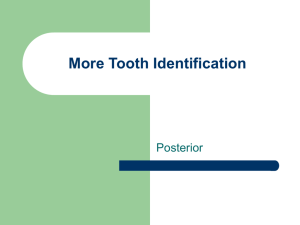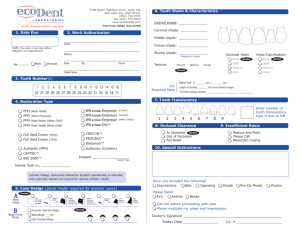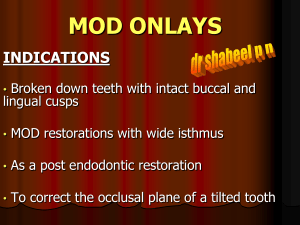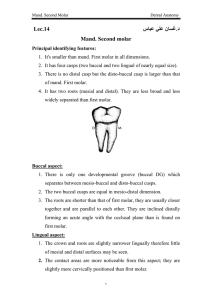Lec. Lec. 10 10
advertisement
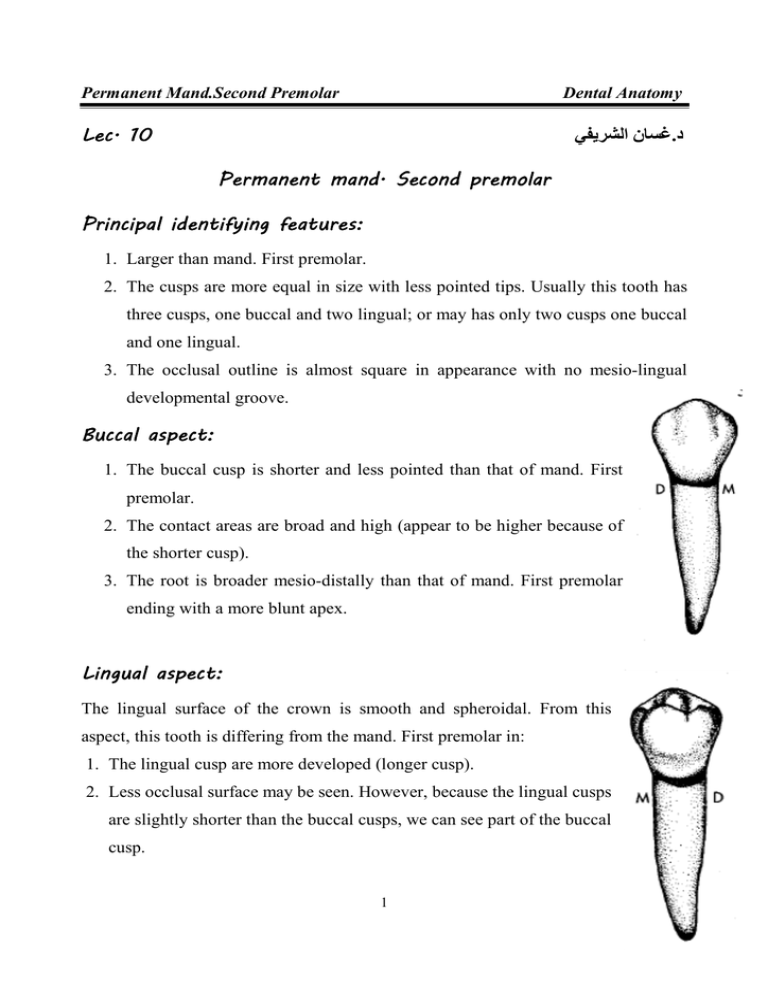
Permanent Mand.Second Premolar Dental Anatomy غسان الشريفي.د Lec. 10 Permanent mand. Second premolar Principal identifying features: 1. Larger than mand. First premolar. 2. The cusps are more equal in size with less pointed tips. Usually this tooth has three cusps, one buccal and two lingual; or may has only two cusps one buccal and one lingual. 3. The occlusal outline is almost square in appearance with no mesio-lingual developmental groove. Buccal aspect: 1. The buccal cusp is shorter and less pointed than that of mand. First premolar. 2. The contact areas are broad and high (appear to be higher because of the shorter cusp). 3. The root is broader mesio-distally than that of mand. First premolar ending with a more blunt apex. Lingual aspect: The lingual surface of the crown is smooth and spheroidal. From this aspect, this tooth is differing from the mand. First premolar in: 1. The lingual cusp are more developed (longer cusp). 2. Less occlusal surface may be seen. However, because the lingual cusps are slightly shorter than the buccal cusps, we can see part of the buccal cusp. 1 Permanent Mand.Second Premolar Dental Anatomy 3. In three cusp type: there are two lingual cusps, the mesio-lingual is larger than the disto-lingual cusp and are divided by the lingual developmental groove. 4. In two cusp type: there is single large lingual cusp. There is developmental depression disto-lingually. Mesial aspect: It differs from mand. First premolar in: 1. The crown and the root are wider bucco-lingually. 2. The buccal cusp is not nearly centered over the root trunk, and is shorter. 3. The marginal ridge is at a right angle to the long axis of the tooth with less occlusal surface may be seen. 4. There is no mesio-lingual developmental groove. 5. The root is longer with more blunt apex. Distal aspect: 1. All the three cusps may be seen. 2. The distal marginal ridge is lower than mesial. Occlusal aspect: A. Three cusp type: 1. The occlusal aspect is square in shape. 2. Three cusps, the buccal is the largest one, followed by mesio-lingual and the disto-lingual cusp. 2 Permanent Mand.Second Premolar Dental Anatomy 3. Each cusp has a well formed triangular ridges separated by deep developmental groove which forms Y shape on the occlusal surface. B. Two cusp type: 1. Occlusal surface appears more rounded. 2. There is one well developed lingual cusp. 3. The central developmental groove takes the shape of U or H while crossing the occlusal surface. 3
